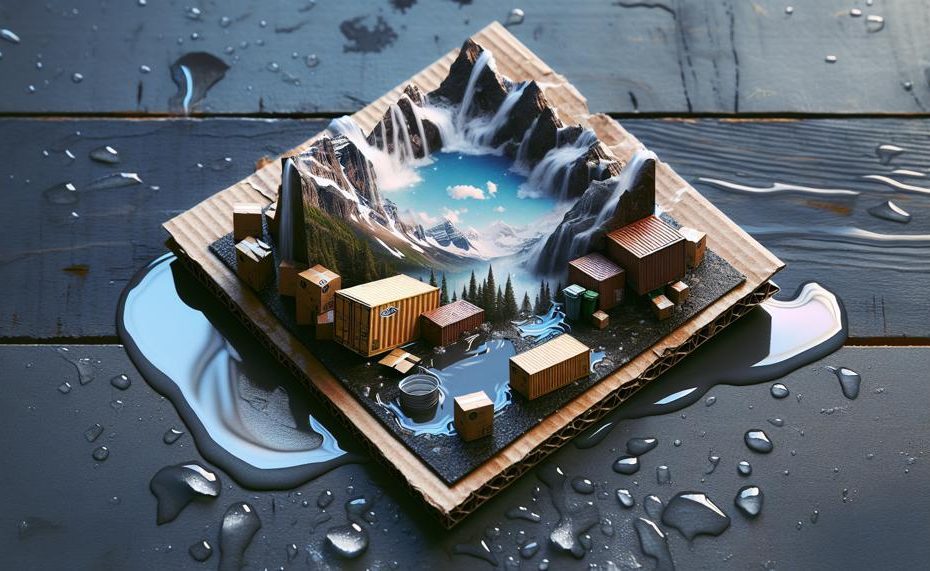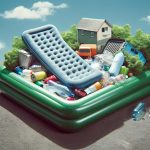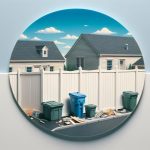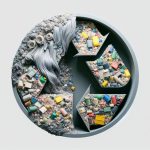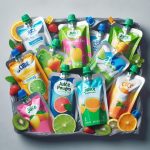Do you cringe every time you see a soggy, smelly cardboard box in your recycling bin? Are you tired of constantly dealing with overflowing landfills and increased pollution? Well, it’s time to take action and learn how to recycle wet cardboard.
Not only is it easier than you think, but it also has a huge impact on the environment. Here’s why:
- Wet cardboard takes up more space in landfills, leading to overflowing and increased pollution.
- Recycling wet cardboard helps save trees and reduces the need for new paper production.
- It also conserves energy and decreases greenhouse gas emissions.
- With proper preparation, wet cardboard can be recycled just like dry cardboard.
- Plus, recycling wet cardboard supports local recycling programs and creates job opportunities.
So don’t let that rain-soaked pizza box or water-damaged shipping box go to waste. By properly recycling wet cardboard, you can make a positive impact on our planet. Keep reading to discover the best practices for recycling wet cardboard and why it’s crucial for a sustainable future.
Contents
How to recycle cardboard at home?
Instead of throwing away wet cardboard, let’s get creative and find ways to give it a second life at home.
Here are some simple yet effective ideas:
Use it as compost
Don’t just throw away wet cardboard – use it to enrich your soil. Simply shred or tear it into small pieces and add it to your compost bin. The microorganisms will break it down, creating nutrient-rich compost for your plants.
Get crafty
Wet cardboard can be repurposed for all sorts of creative projects at home.
Why not build a playhouse for the kids, create storage boxes or dividers, make mulch for your garden, or even turn it into plant pots? Get the whole family involved in these fun DIY activities.
Donate to animal shelters
Local animal shelters often need donations for supplies, and wet cardboard can be a valuable resource.
Contact your nearest shelter to see if they could use your wet cardboard to create beds and scratchers for their furry residents.
Recycle at a center
If you have a lot of wet cardboard that can’t be composted or used for other purposes, consider taking it to a recycling center.
They have specialized equipment to handle wet cardboard and ensure proper disposal.
Remember, before recycling or reusing wet cardboard, be sure to remove any tape, labels, or food waste from the cardboard.
Recycling wet cardboard reduces waste. It also promotes sustainability for future generations.
How to recycle large amounts of cardboard?
Follow these steps to effectively manage large amounts of wet cardboard.
- Evaluate Quality: Before accepting any wet cardboard for recycling, it is crucial to assess its quality. Wet cardboard can weaken and degrade fibers, making them less valuable for creating new products. If the cardboard is excessively wet or contaminated, it may not be suitable for recycling.
- Address Machinery Concerns: Wet cardboard can cause significant issues with machinery in recycling facilities. It can clog machines and make sorting challenging, resulting in inefficiency and potential damage. To avoid this, specialized equipment designed to handle wet materials can be invested in by recycling facilities.
- Review Local Guidelines: In some regions with high humidity, light moisture may be acceptable in the recycling process. It is essential to check local guidelines to determine if wet cardboard is permitted in curbside recycling bins.
- Prepare the Cardboard: The first step in effectively recycling large quantities of wet cardboard is preparation. This involves separating wet or contaminated cardboard from dry, clean ones. Wet cardboard should be set aside for alternative disposal methods.
- Use Curbside Recycling: Most communities have designated bins for collecting recyclable materials, including cardboard. Prepared cardboard can be placed in these bins for collection by recycling trucks.
- Consider Drop-off Locations: In addition to curbside collection, many communities have designated drop-off locations for recyclable materials. These locations may have specific guidelines for handling wet cardboard, which should be followed accordingly.
- Explore Alternative Options: For wet or contaminated cardboard that cannot be recycled, composting is an excellent alternative option. Composting breaks down the cardboard through natural processes and enriches the soil when used as mulch in gardens or flower beds.
- Get Creative: Wet cardboard can also be repurposed for creative purposes such as building playhouses, storage boxes, mulch for gardens, and plant pots. This not only reduces waste but also encourages creativity and resourcefulness.
- Community Programs: Some communities have programs for reusing or repurposing non-recyclable materials. These programs may accept wet cardboard for specific projects or initiatives.
Are there times you should not recycle your cardboard?
While cardboard is an easily recyclable material, there are times when it is not recommended to recycle wet cardboard. These include:
- During inclement weather: Wet cardboard can become even more saturated and difficult to handle during rainy or snowy weather. It is best to wait for dry conditions before attempting to recycle cardboard.
- In areas with limited recycling facilities: If you live in an area with limited recycling facilities, it may be more beneficial to dispose of wet cardboard separately instead of trying to recycle it. This can prevent clogging up machines and causing disruptions in the recycling process.
- When dealing with a large amount of wet cardboard: A large amount of wet cardboard can be overwhelming for recycling facilities to handle. In this case, it may be better to dispose of it separately or explore alternative options such as composting or creative reuse.
- For personal safety: Wet cardboard can pose a health hazard for workers at recycling facilities due to the growth of mold and bacteria. Proper disposal of wet cardboard is crucial to ensure the safety of these workers.
The Trouble with Cardboard at your Doorstep
It is crucial to dispose of wet cardboard properly for several reasons. First, moisture weakens the paper fibers that give cardboard its structure. This makes it less valuable and more prone to breakage. This can cause problems during the recycling process. Automated sorting machines can become jammed by wet cardboard. This leads to delays and disruptions.
Wet cardboard mixed with dry cardboard during recycling can contaminate the entire batch. In addition, the two types of cardboard should not mix. Mold can grow on wet cardboard. This poses health risks to workers and could spread to other materials. This affects recycling efficiency and creates potential hazards for workers.
Improper disposal of wet cardboard can also have negative consequences for the environment. Wet cardboard produces methane gas as it decomposes. Methane is a potent greenhouse gas that contributes to climate change. Furthermore, due to its weakened state, wet cardboard takes up more space in landfills than dry cardboard. This leads to quicker filling and a need for more space.
To avoid these consequences, it is important to dispose of wet cardboard properly. You can achieve this by separating it from dry cardboard. Then, place it in designated compost or waste bins.
Are there different types of cardboard?
Cardboard is a popular packaging material. There are various types. They differ in their ability to be recycled when wet.
The material and coating of the cardboard determine whether it can be recycled when damp.
Corrugated Cardboard
Corrugated cardboard consists of three layers: an inner layer, corrugated medium, and outer liner.
It is commonly used for packaging and shipping materials. This type of cardboard is highly recyclable when wet. The corrugated medium provides strength and durability, even in moist conditions.
Non-corrugated or Paperboard Cardboard
Also known as chipboard or paperboard, this type of cardboard is often used for food packaging, cereal boxes, and shoeboxes.
It can be recycled when dry. However, it is not suitable for recycling when wet. This is because it has lower strength and durability compared to corrugated cardboard.
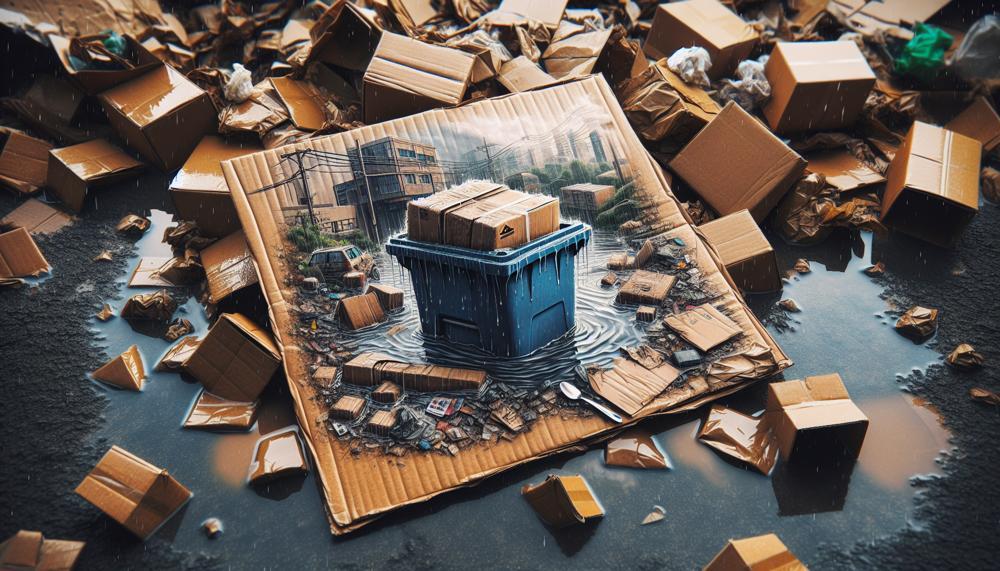
Coated Cardboard
Any type of cardboard with a layer of wax, plastic, or foil on its surface is considered coated cardboard. It is commonly used for juice boxes, milk cartons, and frozen food packaging.
This type of cardboard is typically not recyclable when damp. The added layer makes it challenging to separate and recycle the materials.
Pizza Boxes
Pizza boxes are usually made from corrugated cardboard. However, they may have grease or food residue on them. This makes them contaminated and unsuitable for recycling.
However, if the box is clean and free from any food residue, it can be recycled with other corrugated cardboard materials.
What can cardboard be recycled into?
The potential for repurposing recycled cardboard is endless. It can be used in many ways. People use it for arts and crafts, as packaging material, for mulching in gardening, and even for creating unique furniture and home decor items.
The versatility of recycled cardboard is truly remarkable. With a little creativity and some DIY skills, you can transform old cardboard into something new and useful. For instance, you could cut out different shapes and sizes of cardboard to create a unique piece of wall art. You could also use it as an affordable alternative to canvas. You could also use recycled cardboard as padding or cushioning when shipping delicate items. It’s an alternative to using bubble wrap or other non-recyclable materials.
In addition to its artistic uses, recycled cardboard can also serve practical purposes. It can be shredded and used as mulch in gardening, providing insulation and retaining moisture for plants.
It can also be used as packaging material for shipping or moving. This reduces the need for plastic or styrofoam alternatives. If you’re feeling ambitious, you could even try building furniture or home decor items with recycled cardboard. The possibilities are endless.
Repurposing cardboard not only reduces waste and benefits the environment, but also lets people express creativity and save money.
Conclusion
In conclusion, recycling wet cardboard is a simple way to help the environment. It also has an impact. It also supports local recycling efforts. It reduces pollution and saves trees. Additionally, it conserves energy and creates job opportunities.
However, it is important to note that there are certain situations where recycling wet cardboard may not be recommended. This includes severe weather or areas with limited recycling facilities.
In these cases, we can get creative. We can find alternative uses for wet cardboard instead of simply throwing it away.
